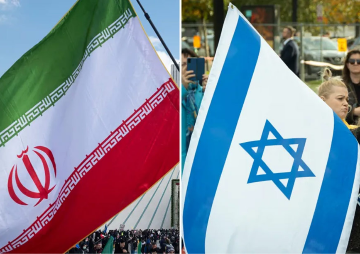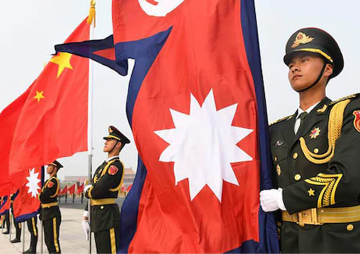
On 27 November 2014, India introduced a visa facility whereby travellers from eligible countries could obtain a visa to visit India online rather than having to visit the Indian embassy to obtain the same. Known as the e-tourist visa (eTV) policy, it is extended to travellers from 150 countries with a fee structure ranging from USD 0 to USD 60 and reduced bank charges to 2.5 percent of the e-tourist visa.
Since operation, the policy has recorded impressive results. The absolute number of e-tourist visas issued has gone up from 14,083 in December 2014 to 115,677 in March 2016. Moreover, the share of travellers that obtained an e-tourist visa in the total foreign tourist arrivals (TFTAs) has gone up from 1.61 percent in December 2014 to 14.16 percent in March 2015.
Yet, the success of the policy remains dubious — month on month growth rate of e-tourist visas issued has been volatile averaging at only 19 percent over the 16 month period. Moreover, the average share of e-tourist visas in the TFTAs continues to be a very small share — on an average, only 6 percent of travellers to India for the period December 2014 through March 2016 opt for an eTV while the remaining 94 percent avail their tourist visa at the Indian embassy.
What limits the success of eTV policy?
In a forthcoming policy brief , I review the modalities of the policy and find the following limitations:
1. Modalities of the eTV policy are such that tourist visa from the Indian embassy stands lucrative for the travellers. For instance, US citizens applying for a tourist visa at the Indian embassy may be endorsed with a ten year multiple entry tourist (as against single entry eTV available for a maximum of two visits) visa where each visit is a maximum stay of up to six months (as against 30 days during each visit under eTV), and all this for a visa fee of USD 100 (as against eTV fee of USD 60 for each visit).
Given these options, an informed US citizen would most likely opt for the regular tourist visa rather than eTV.
2. Discrepancy in the name and the modalities of the policy. To lay-travellers, an eTV would mean that they will be issued an electronic tourist visa if their eTV application is successful. This observation finds support in instruction number 6 on the
Indian visa website , which states, “applicant should carry a copy of eTV along with him/her at the time of travel.” However, on the same webpage, instruction number 11 states, “e-tourist visa issued on arrival..” This discrepancy raises the question if the policy is an ‘e-tourist visa’ policy or a ‘visa on arrival enabled through electronic travel authorisation’ policy?
3. Discrepancy in the name and the objective of the policy. The website states that eTV travellers can visit India for recreation, sightseeing, casual visit to friends or relatives, short-duration medical treatment or causal business visits. However, this contrasts the ‘Frequently asked questions relating to tourist visa’ available on the Bureau of Immigration, Ministry of Home Affairs which states:
- “...Foreign nationals coming for medical treatment will have to come only on Medical Visa and not on Tourist visa”; and
- “.. If a person holding ‘tourist visa’ is found to be involved in business activities, action may be taken for visa violations.”
This discrepancy raises the question if eTV travellers can engage in activities such as 'short duration medical treatment or casual business visit' without being held up for visa violations. Moreover, the scheme does not specify what qualifies for short duration medical treatment or casual business visit. In comparison, the Sri Lankan government clearly specifies the business activities that holders of Electronic Travel Authorisation (ETA) can undertake.
Policy Implications
Given the above shortcomings, I provide the following recommendations:
1. If the objective is to issue an eTV, the government should do away with the words “..
issued on arrival..”, and instead, use “
after receiving your electronic tourist visa (with a visa number) on your registered email, print it out and bring it along with your valid passport when you travel to India. The email print will then be exchanged for a visa stamp which will be placed in your passport at designated arrival airports in India. Designated arrival airports are those where entry through e-visa is valid.”
Alternatively, the Indian government can adopt the ETA system. Accordingly, rename the existing policy to ‘visa on arrival through ETA’, make necessary changes to the online system such that travellers are provided with an ETA number which would translate to a visa on arrival at the designated port of entry in India.
Regardless, the government should provide email samples on the official website which include details of the status, approved or rejected, either of the e-tourist visa application or the ETA application.
2. If the objective is to encourage short duration medical treatment or casual business visit, it is essential to rename the ‘e-tourist visa’ to ‘e-visa’.
However, if the government is keen on continuing with the name, ‘e-tourist visa’, then it should reduce the scope of activities to ‘recreation, sight-seeing, and casual visit to meet friends or relatives’ so that it does not stand in violation with the ‘Frequently asked questions relating to tourist visa’ available on the Bureau of Immigration, Ministry of Home Affairs. Moreover, the government should update the ‘Frequently asked questions relating to tourist visa’ available on the Bureau of Immigration, Ministry of Home Affairs, with necessary information such that it takes into account the scope of the newly introduced visa regime.
Irrespective, the government should provide details of the activities travellers can undertake on eTV and then consolidates them into broader groups. These groups should be in alignment with the policy’s objective. Therefore, travellers, before starting the application, should be provided with three options:
- Tourist e-visa,
- Business e-visa, and
- Medical e-visa
Assuming that the traveller opts for a ‘tourist e-visa’, the system should then take him/her to the landing page of the tourist e-visa application where he/she should be asked to choose one of the identified tourism activities which may include recreation or sight-seeing, casual visit to meet friends or relatives, among others.
3. The government should either increase the initial (current) prescribed length of stay of 30 days or allow visa extension while travellers are in India or a combination of both. For instance, the government can extend the length of stay from 30 to 90 days with a 90 day extension by the concerned authorities in India making it a maximum stay of 180 days in India. Moreover, during their stay on eTV, travellers should be allowed to enter India multiple times with no requirements for a re-entry permit.
4. The government should focus on making India as a multi-stop destination within the Asia-Pacific region. This can be achieved by either entering regional joint visa agreements that allow travellers from a third country to move freely between member countries once admitted by one of the participating countries or increase reciprocation to visa policies of member countries of the region.
Conclusion
India’s attempt at reforming visa regimes is to be laudable. Nevertheless, the policy needs to be closely examined and fine tuned. The lessons of the Indian visa liberalisation reforms seem to be well worth considering elsewhere. Facilitating the movement of people is not only important for the ever-expanding tourism industry, but also, for economies in general especially in an era of globalisation and international value chains.
‘India’s share in Foreign Tourist Arrivals’ Press Information Bureau, Government of India, 4 May 2016. http://pib.nic.in/newsite/PrintRelease.aspx?relid=144794.
Throughout the paper, total foreign tourist arrivals (TFTAs) from a given country c in a given year t in India or total foreign tourist arrivals (TFTAs) in a given year t in India represents (proxies) the total tourist visas issued to a given country c in a given year t by India or total tourist visa issued in a given year t by India.
The policy brief is under review.
It is to be noted that Indian tourist visas whether availed from the Indian embassy or online, are non-extendable and non-convertible for US travelers. http://indianconsulate.com/page/display/99/12
India’s official e-tourist visa application website.
‘Frequently Asked Questions Relating to Tourist Visa’ updated on 11 August 2014. http://mha1.nic.in/pdfs/ForeigD-FAQ-TVisa280710.pdf
< style="color: #000000">Dr. Natasha Agarwal is a research economist affiliated with the World Education Foundation (WEF). She is currently working in the area of international trade, foreign direct investment (FDI), migration, and open government data.
The views expressed above belong to the author(s). ORF research and analyses now available on Telegram! Click here to access our curated content — blogs, longforms and interviews.




 PREV
PREV


